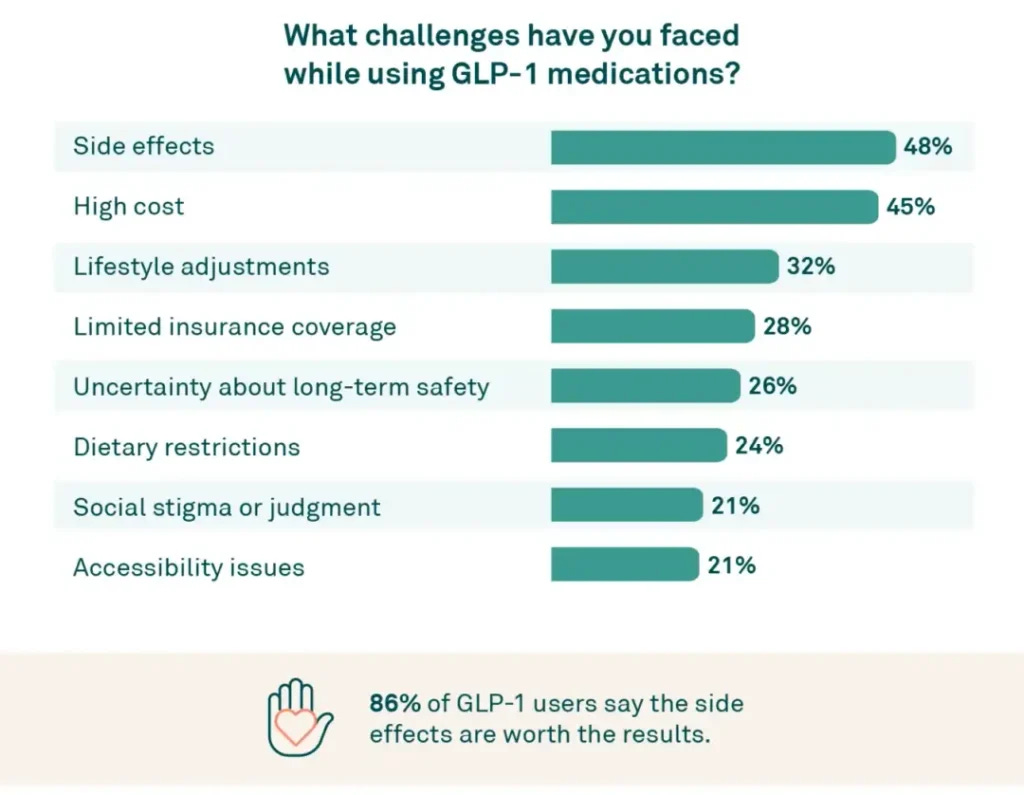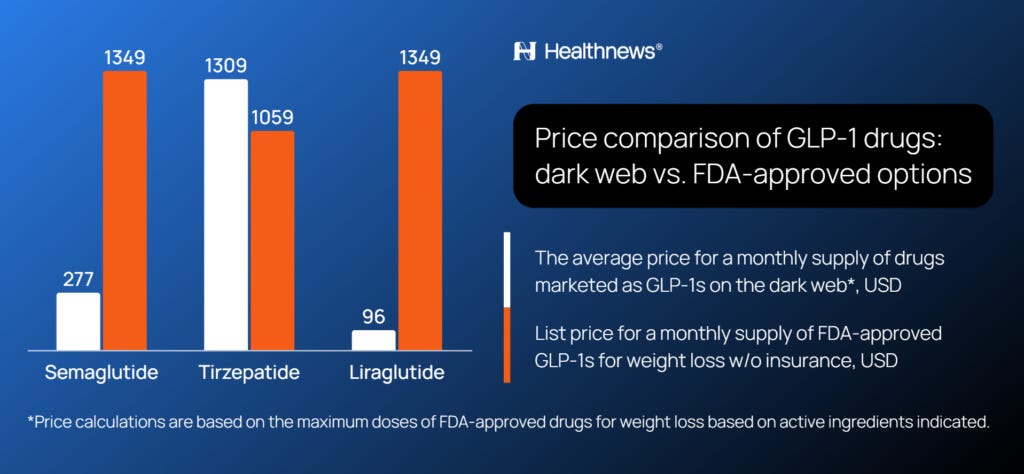The Gut Punch Weekly #2
Metsera’s long-acting GLP-1 shows promise, Trump’s Greenland feud threatens Novo, Lilly and Novo seek to restrict GLP-1 compounding, and more.
The Ozempic Era, Part I: Craveware
The conventional narrative blames the obesity epidemic on a simple calories-in, calories-out equation gone wrong. But that explanation misses the orchestrated campaign that reshaped global eating habits.
The true inflection point came in the 1980s, when major tobacco companies, facing declining cigarette sales and mounting public health concerns, began acquiring food manufacturers en masse: Philip Morris purchased General Foods in 1985 and Kraft in 1988, while R.J. Reynolds acquired Nabisco in 1985 8. These weren’t just diversification plays. The tobacco giants brought something far more valuable than capital to their new food subsidiaries: decades of expertise in creating dependency by engineering and marketing addictive products.
The results were transformative. Under tobacco company ownership, food products became dramatically more “hyperpalatable” – industry speak for engineered combinations of fats, sugars, and sodium not found in nature that trigger compulsive consumption 9. Recent research reveals the scope of this transformation: Foods owned by tobacco companies were 80% more likely to contain potent combinations of carbs and sodium and were 29% more likely to contain powerful combinations of fats and sodium 10. Today, a staggering 68% of the American food supply meets the scientific criteria for hyperpalatability 11.
This isn’t just processed food; it’s addiction engineering. The same companies that spent decades optimizing nicotine delivery systems turned their expertise to engineering foods that override natural satiety signals and hijack reward pathways in the brain. These addictive combos serve as “craveware” that hacks our brain’s reward center, enticing us to eat beyond satiety – exactly what corporate bottom lines demand. Add an onslaught of marketing campaigns and “value meals” that stack cheap calories high, and you have a perfect recipe for widespread obesity 12.
This is the story of how the Food Industrial Complex used the Big Tobacco playbook to engineer an addiction crisis.
Read more in The Ozempic Era, Part I: Craveware.
Top Stories
Metsera’s Ultra-Long Acting GLP-1 Shows Promise: Metsera’s once-monthly, ultra-long acting GLP-1RA candidate (MET-097i) showed up to 11.3% placebo-adjusted weight loss at 12 weeks in a Phase 2a trial, with minimal GI side effects and potential for once-monthly dosing.
Greenland Feud Threatens Novo’s US Sales: President-elect Trump’s threats to annex Greenland and impose tariffs on Denmark spark uncertainty for Novo Nordisk, the maker of Ozempic.
Novo heavily depends on the US market, which accounts for 60% of its sales.
Lilly Joins Compounded Tirzepatide Lawsuit: Lilly joins the Outsourcing Facilities Association’s Weight Loss Drug Compounding lawsuit, aiming to uphold the FDA’s stance that the tirzepatide shortage is over.
Novo Seeks to Restrict Victoza Compounding: Novo Nordisk petitioned the FDA to prevent compounding pharmacies from producing knockoffs of liraglutide (Victoza/Saxenda) despite supply constraints, citing manufacturing complexity and newly available generics.
Industry Intel
Dr. Lustig Unveils Sugar-Absorbing Fiber for Weight Loss: Obesity expert Dr. Robert Lustig has unveiled “Monch Monch,” a sugar-eliminating, prebiotic fiber that can trap dietary sugars and enhance gut health — aiding weight loss and blood sugar regulation without strict dieting.
Dr. Lustig recently showcased Monch Monch on the Huberman Lab podcast.
A recent study found that an increase in dietary fiber (and protein) strongly correlated with greater weight loss.
Hims & Hers Donates $1M to Trump Inauguration: Telehealth company –and compound GLP-1 seller – Hims & Hers made a $1 million donation to President-elect Trump’s inaugural committee.
Hims is likely seeking policy goodwill at a time when the future of compounded GLP-1s in the US is on shaky ground.
Novo, Variant Partner on Novel Metabolic Disease Targets: Novo Nordisk is collaborating with genomics-driven Variant Bio to identify new genetic targets for metabolic disease therapy, combining large-scale genomics with multi-omic analysis to identify high-evidence drug targets for underrepresented populations.
Eli Lilly’s New Oral, Nonpeptide Agonist Shows Promise: Researchers detail how orforglipron – an oral nonpeptide GLP-1 receptor agonist – effectively binds GLP-1 receptors, lowering blood glucose and body weight in rats.
Phase 2 results in 2023 showed up to a 14.7% weight loss after 36 weeks. Phase 3 results are hotly anticipated in 2025.
BioAge Faces Investor Fraud Allegations: BioAge Labs is facing a class-action lawsuit from IPO investors alleging misleading statements regarding the company’s Phase 2 trial for weight-loss drug azelaprag, which was ultimately halted in December due to safety concerns.
FDA Tells Drug Companies to Focus on Fat, Not Weight: The FDA’s new draft guidance raises the standard for obesity drugs, instructing companies to focus on sustained fat loss over mere weight loss (i.e. fat and muscle combined).
How Weight-Loss Drugs Are Upending Consumer Industries: A PwC report finds that the rising adoption of GLP-1 therapies is reshaping consumer sectors, from reduced food and alcohol purchases to shifts in fashion, travel, and wellness, prompting businesses to adapt or risk losing market share in a post-diet world.
Medifast Debuts High-Protein, Fiber-Rich Mini Meals: Medifast joins the long list of companies launching high-protein, fiber-rich GLP-1 companion food products to complement weight-loss medications and help manage side effects.
AI Health Coaching Boosts Weight Loss Results: Digital health company Simple found that increased user interactions with its in-app AI health coach significantly correlated with greater weight loss over three months, highlighting the potential for tech-driven healthy habit reinforcement.
New App Streamlines GLP-1 Treatment: Gala launched a GLP-1 companion app to track injection schedules, perform symptom checks, and provide educational resources for GLP-1 medication users.
Analysts Predict Booming Heart Failure GLP-1 Drug Growth: As GLP-1 therapies gain traction in heart failure, analysts predict drugs like Wegovy and Zepbound could contribute an additional $20 billion in sales to the heart failure market by 2032.
Frontline Focus
GLP-1s Are Changing Consumer Spending: A Circana report finds that consumers taking GLP-1 drugs initially reduce their total grocery spend, shifting purchases away from sugary or fatty items while increasing demand for healthy, protein-rich products.
However, the report also finds that total grocery spend rebounds to pre-medication levels 12 months after starting treatment.
GLP-1s Steal 2025 Golden Globes Show: The host of the 82nd Golden Globes joked that it was “Ozempic’s biggest night,” alluding to alleged rampant off-label usage among celebrities.
Gen Z Leads GLP-1 Resolution Trend: Over one-quarter of Americans, driven especially by Gen Z, plan to use GLP-1 weight-loss medications to reach their 2025 health goals, though accessibility and cost concerns remain widespread.
US Obesity Rates Show First Decline in Over a Decade: Newly compiled records suggest a minor but significant dip in US adult obesity rates in 2023, reversing a long upward trend.
Dark Web Flooded with GLP-1 Drugs: Investigators found widespread unauthorized — and potentially counterfeit — GLP-1 drug sales on dark web marketplaces, posing severe health and legal risks.
Illinois Attorney General Issues Compounded GLP-1 Alert: Attorney General Raoul warns consumers about misleading advertising and unregulated compounding of GLP-1 weight-loss drugs.
GLP-1 Clinical Insights
GLP-1 Withdrawal Poses Weight Relapse Risk: Discontinuing GLP-1 therapy often leads to weight regain and potentially worsened metabolic issues, underscoring that obesity is chronic and GLP-1 drugs may require lifelong administration.
Semaglutide Linked to Rare Eye Risk: A large Danish–Norwegian study suggests semaglutide use correlates with a low but measurable increased risk of non-arteritic anterior ischemic optic neuropathy, a rare condition where vision is lost due to a lack of blood flow to the optic nerve.
No Increased Suicide Risk for GLP-1 Users: A large case-time-control study finds no specific heightened risk of suicidal behaviors among GLP-1 medication users, despite prior concerns.
Obese Patients with HFpEF Benefit from Tirzepatide: New evidence shows tirzepatide significantly enhances cardiovascular and kidney outcomes in obese patients with heart failure and preserved ejection fraction (HFpEF).
Review Finds GLP-1 Aids Nondiabetic Weight Loss: A systematic review finds GLP-1 receptor agonists safe and effective for weight reduction in nondiabetic adults, though gastrointestinal side effects are common.
Of particular note, Eli Lilly’s experimental obesity drug retatrutide shows particular weight loss promise, outperforming liraglutide, semaglutide, tirzepatide, and a variety of other pre-market agents.
Proteomics Uncover Semaglutide’s Metabolic Impact: Proteomic profiling reveals semaglutide alters pathways linked to glycemic control, lipid metabolism, and inflammation in obese patients — reducing cardiometabolic risk markers.
Semaglutide Helps Cut Blood Pressure, Lipid Meds: A study found that across multiple STEP trials, semaglutide enabled many patients to reduce or discontinue antihypertensive and lipid-lowering medication use.
Semaglutide Improves Blood-Brain Barrier Integrity: Semaglutide reverses diet-induced metabolic syndrome-associated blood-brain barrier damage in rats by rejuvenating astrocyte-vascular alignment.
GLP-1 Eases Cancer-Therapy-Related Cardiac Dysfunction: A retrospective analysis suggests GLP-1 drugs could significantly improve survival outcomes for cancer patients experiencing cancer-treatment-related cardiac complications.
The Bleeding Edge
iBio Licenses Anti-Myostatin Antibody for Fat Loss: iBio licensed an anti-myostatin antibody from AstralBio to create a new myostatin + activin A bispecific antibody that promotes weight loss without muscle loss or weight regain.
Positive Phase 1 for MBX’s GLP-1 Antagonist: MBX Biosciences reported Phase 1 success for MBX 1416, a novel long-acting GLP-1 receptor antagonist aimed at treating post-bariatric hypoglycemia with once-weekly dosing.
Biomea’s Dual Therapy Improves Glucose Control, Muscle: Biomea Fusion’s new preclinical findings show that icovamenib combined with semaglutide yields improved fat loss, enhanced lean muscle, and better glycemic control compared to semaglutide alone.
Sun Pharma Patent Details Triple Agonist Metabolic Therapies: Sun Pharmaceutical’s new patent filing reveals dual and triple incretin receptor agonists (of GIPR/GLP-1/GCGR) for treating obesity, diabetes, and other metabolic or fibrotic disorders.
GLP-1 Probiotic Shows Type 2 Diabetes Benefits: Probiotic strain C. butyricum, when engineered to express GLP-1, helps control hyperglycemia, correct dyslipidemia, and restore gut balance in diabetic rodents.








